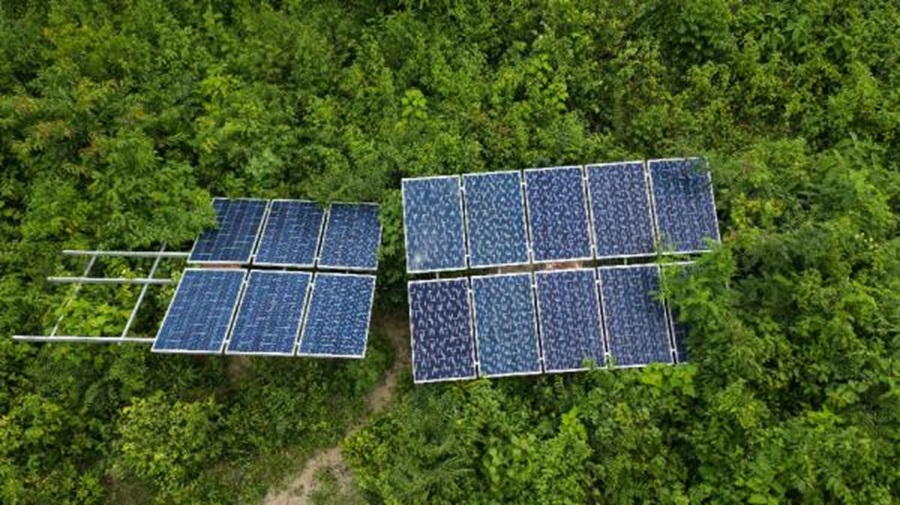How Cambodia is Embracing Green Tech for a Sustainable Future

Cambodia, a rapidly growing economy in Southeast Asia, is making remarkable strides toward adopting green technology to secure a sustainable future. With increasing environmental challenges and growing energy demands, the Kingdom is focusing on renewable energy and eco-friendly technologies to promote economic growth while minimizing its environmental footprint. In this article, we’ll explore how Cambodia is embracing green tech, the role of renewable energy, government initiatives, challenges, and the country’s future prospects in achieving a greener, more sustainable future.
1. Cambodia’s Green Energy Transition
Cambodia’s energy sector has historically relied heavily on fossil fuels, but recent efforts have significantly shifted toward clean and renewable energy sources. Currently, fossil fuels still make up a substantial portion of the energy mix, but Cambodia has made ambitious plans to transition to a greener energy model.
The Cambodian government has set a target to generate 70% of its energy from renewable sources by 2030, a goal that aligns with global sustainability trends. This ambitious target focuses on harnessing the power of solar, wind, hydropower, and biomass to meet the country’s growing energy demands. The government’s strategic approach to green energy is critical to reducing dependence on imported fuels and enhancing energy security.
International investments have also played a crucial role in this transition. Cambodia has attracted several foreign companies and partnerships to implement green energy projects, bringing advanced technologies and expertise to the country. This cooperation ensures that Cambodia’s green energy infrastructure continues to grow and improve, making it a significant player in the Southeast Asian renewable energy landscape.
2. The Rise of Renewable Energy in Cambodia
Cambodia’s push toward renewable energy has led to a surge in investment and innovation, particularly in solar and wind power. Let’s take a closer look at the major renewable energy sources contributing to Cambodia’s sustainable future.
a. Solar Power Expansion
Solar power is one of Cambodia’s most promising sources of renewable energy, given the country’s abundant sunlight throughout the year. Solar energy projects, such as the Schneitec Infinite Solar Park, have been established to harness this natural resource. These solar farms provide clean energy to thousands of households and contribute to the reduction of greenhouse gas emissions.
Government policies, such as tax incentives and favorable tariffs, have spurred the adoption of solar panels in both urban and rural areas. Solar power is particularly beneficial in rural regions, where the national electricity grid may not reach. As more people embrace solar technology, Cambodia moves closer to achieving its renewable energy targets.
b. Wind Energy Development
Although wind energy is less developed than solar power in Cambodia, it holds great potential. The coastal regions of Cambodia are well-suited for wind farms due to the consistent winds that can generate substantial amounts of electricity. Recent wind energy projects have started to take shape, with several more planned for the future.
The Cambodian government is actively exploring opportunities to scale up wind energy production, with an eye on reducing the nation’s reliance on imported energy. This renewable source could become a vital part of Cambodia’s future energy mix, especially as global demand for wind energy continues to rise.
c. Hydropower and Its Role
Hydropower has been a significant part of Cambodia’s energy sector for years. The country has several large-scale hydropower dams, including the Lower Sesan 2, which provide a substantial portion of the country’s electricity. While hydropower is a reliable source of renewable energy, it has come under scrutiny due to environmental concerns.
Large hydropower projects can disrupt ecosystems, displace communities, and cause changes in water quality and flow patterns. Despite these challenges, hydropower remains an essential part of Cambodia’s energy landscape, and the government is committed to finding ways to balance its benefits with environmental and social impacts.
3. Green Technology Innovations in Cambodia
Beyond energy production, green technology is also transforming various sectors of Cambodia’s economy, including agriculture, construction, and transportation.
- Smart Farming: The agricultural sector in Cambodia has seen the adoption of smart farming technologies that optimize water use, reduce chemical inputs, and increase crop yields. Eco-friendly agricultural practices, such as precision farming, are revolutionizing the way Cambodian farmers work, improving sustainability and profitability.
- Sustainable Construction: In urban development, eco-friendly construction practices are being embraced to reduce carbon footprints. Sustainable building materials, energy-efficient designs, and green building certifications are becoming more common in Cambodia’s real estate industry.
- Electric Vehicles (EVs): With the growing global trend of electric mobility, Cambodia is beginning to explore the potential for electric vehicles (EVs). EVs offer a cleaner, more efficient alternative to traditional combustion engine vehicles, reducing emissions and improving air quality. The government is looking at incentives to encourage the adoption of EVs, which could help reduce the country’s reliance on fossil fuels and promote eco-friendly transportation.
4. Government Policies and Investments
The Cambodian government has implemented several key policies aimed at fostering the growth of green technology and renewable energy in the country. Key initiatives include:
- National Green Growth Roadmap: The Cambodian government’s Green Growth Roadmap is a long-term strategy designed to integrate environmental, social, and economic objectives. It aims to create a sustainable economy by promoting green energy, sustainable agriculture, and efficient resource management.
- Investment Incentives: The government has introduced tax incentives and subsidies to encourage businesses to invest in renewable energy projects. These incentives help reduce the upfront costs of solar and wind farms, making it easier for companies to adopt green technologies.
- Public-Private Partnerships: Cambodia has also engaged in partnerships with international organizations and private-sector investors. These partnerships have resulted in the establishment of renewable energy projects, such as solar farms and hydropower stations, which will help the country reach its sustainability goals.
5. Challenges in Adopting Green Technology
Despite the positive developments, Cambodia faces several challenges in fully embracing green technology. Some of the key obstacles include:
- High Initial Costs: The upfront cost of implementing renewable energy systems, such as solar panels or wind turbines, can be prohibitively expensive, especially for small businesses or rural communities. While the long-term savings are substantial, the initial investment remains a barrier.
- Infrastructure Limitations: Cambodia’s energy infrastructure needs significant upgrades to accommodate large-scale renewable energy production and distribution. There is also a need for modern grid systems to integrate energy from decentralized sources like solar and wind.
- Balancing Economic Growth and Environmental Concerns: While Cambodia is keen to promote green technology, it must also balance these efforts with its ongoing need for economic growth. Developing a sustainable economy requires careful planning to ensure that environmental initiatives do not hinder economic development.
6. Future Prospects and Opportunities
Cambodia’s future in green technology looks promising. With continued investment in renewable energy and green technologies, the country has the potential to become a leader in sustainable development in Southeast Asia. Some opportunities for growth include:
- Renewable Energy Expansion: As solar, wind, and hydropower projects continue to expand, Cambodia can generate more clean energy, reduce its carbon footprint, and lower electricity costs for consumers.
- Exporting Green Tech: Cambodia has the potential to export its green technologies to neighboring countries, further boosting its economy and positioning itself as a green tech hub in Southeast Asia.
- Job Creation: The green energy sector will continue to create job opportunities, from solar panel installation to green farming practices, benefiting local communities and strengthening the economy.
Conclusion
Cambodia’s embrace of green technology and renewable energy offers a pathway to a more sustainable and prosperous future. Through government policies, international investments, and local innovation, Cambodia is positioning itself as a leader in Southeast Asia’s green tech revolution. While challenges remain, the country’s commitment to sustainability is undeniable, and its future looks increasingly green. As businesses, governments, and individuals continue to support and invest in green initiatives, Cambodia can pave the way for a cleaner, more sustainable future for generations to come.
Call to Action: Stay informed and support Cambodia’s green transformation by exploring the latest green tech innovations and sustainability initiatives. Share your thoughts and join the conversation about how we can work together for a greener Cambodia!



